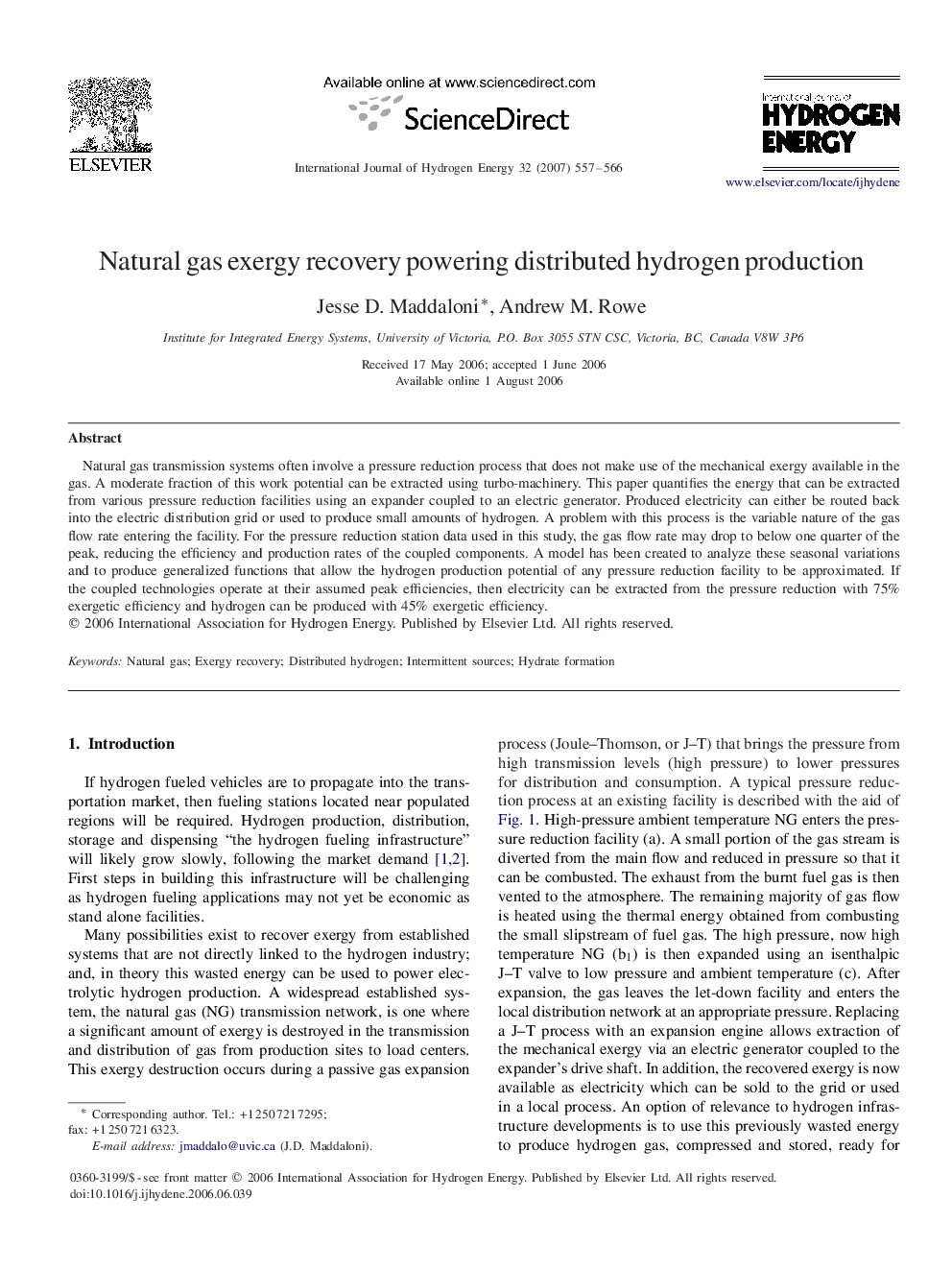| Article ID | Journal | Published Year | Pages | File Type |
|---|---|---|---|---|
| 1283888 | International Journal of Hydrogen Energy | 2007 | 10 Pages |
Natural gas transmission systems often involve a pressure reduction process that does not make use of the mechanical exergy available in the gas. A moderate fraction of this work potential can be extracted using turbo-machinery. This paper quantifies the energy that can be extracted from various pressure reduction facilities using an expander coupled to an electric generator. Produced electricity can either be routed back into the electric distribution grid or used to produce small amounts of hydrogen. A problem with this process is the variable nature of the gas flow rate entering the facility. For the pressure reduction station data used in this study, the gas flow rate may drop to below one quarter of the peak, reducing the efficiency and production rates of the coupled components. A model has been created to analyze these seasonal variations and to produce generalized functions that allow the hydrogen production potential of any pressure reduction facility to be approximated. If the coupled technologies operate at their assumed peak efficiencies, then electricity can be extracted from the pressure reduction with 75% exergetic efficiency and hydrogen can be produced with 45% exergetic efficiency.
